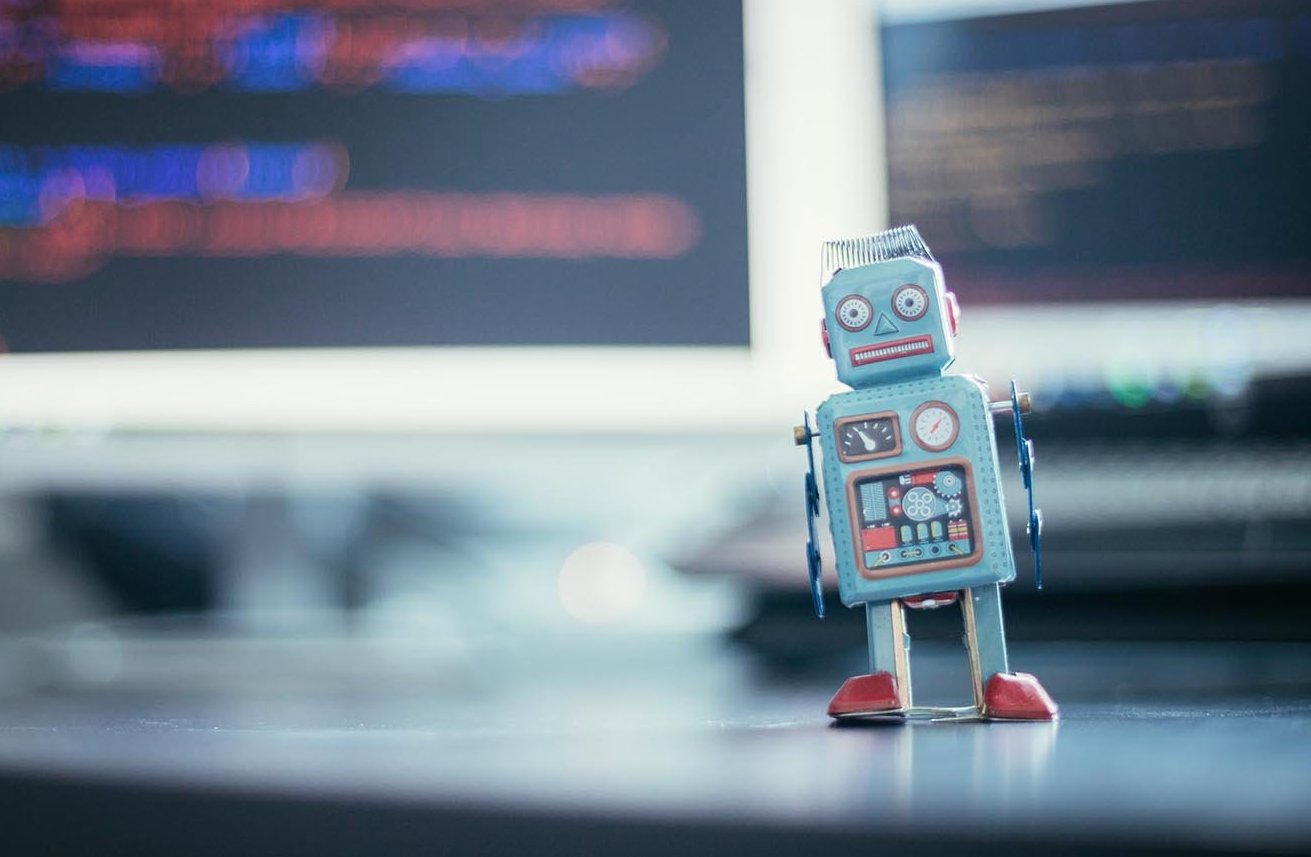
Bots, bots and more bots. These invisible digital assistants, like Visualping.io, are permeating our lives with seamless automation and razor sharp efficiency.
They’re permeating our future as we use them for everything from schedule work meetings to buy pizza.
But what, exactly, is a bot?
Bots are everywhere. You’ve likely heard of “bots” before.
The hype blew up in 2016 as developers threw time and money into the reverie of personal digital helpers. Facebook and Microsoft announced investments in new user messaging interfaces, and the rising number of bots within them. Slack launched a fund to support the bots it hoped would build on its platform. Someone made a Twitter bot called @allthecheeses. It has 1,623 followers and retweets peoples’ love for cheese.
But when bots first became available to the public at the onset of the early 2000s, everyone shrugged and said So What. Nobody really liked using chatbots on business websites; typing into text boxes – and often trying to predict the commands – felt weird next to the visual interfaces everyone was used to. Bots went latent for over a decade. They tapered into the background as another Silicon Valley innovation ahead of its time.
But bots never disappeared. They just became invisible. While public interest receded, the tech industry invested in the software.
In 2015, a flock of trends merged that put investors’ and entrepreneurs’ focus on messaging interfaces. Rising frustration with the desktop and mobile web etched a market for an alternative. Advancements in natural language processing led the way to software that understands our requests and personalizes its responses.
Now, smartphones and messaging interfaces – WeChat, WhatsApp, Instagram and Facebook Messenger – have surfaced as some of the world’s most popular apps. Bots populate websites and social media platforms to improve businesses’ customer service and speed up shopping processes.
Bots are also a cheaper and faster employee for repetitive back-office administrative work. If you have the kind of job that involves sitting in front of a computer using the same software the same way every day, then you’ve wondered if a bot will eventually take your seat.
According to Silicon Valley, the time-worn fantasy of digital assistants with the echo of a human is booming back into the mainstream. But how many of us know what a bot even is? What is a bot?
What is a Bot?
Bots, short for “robots,” are automated programs designed to learn and execute specific computer-based tasks, including rules-based business processes. Bots emulate computer-based activities to perform efficient and error-free tasks, interacting with applications or systems much like the way people do.
But the difference is that bots operate continuously, and without the possibility of human error. They don’t get tired, they don’t complain about their monenemous work, and they don’t take lunch breaks. Bots also operate much faster – and cheaper – than the average employee on repetitive, rules-based administrative tasks.
There are bots that crawl the web to make content searchable in Google; bots that control the behavior of characters in video games; monitoring bots that watch the content on web pages to alert people of changes; "botnets" of computers organized by hackers to email spam or defraud advertisers or launch denial-of-service attacks on websites.
Examples of Bots
Bots in Business
Businesses want what’s faster, cheaper and doesn’t complain, and businesses’ appetites for the automation they enable is only increasing. They’re automating low-value tasks to boost business productivity and allocate complex decision-making and creative tasks to human employees.
Accelerating this momentum are consumers demanding quicker access to information and faster customer service, both of which are provided by bots: more automated messaging can be found on companies’ websites and apps than ever before.
April Underwood, Slack’s VP of product, says large enterprise software companies are on their way to investing in building their own bots. And smaller developers will be able to rely on those companies’ expertise in machine learning so they don’t all have to build their own engines. "I predict by the end of 2016, we’re going to see more really great examples of household-name companies creating great bot experiences," she says.
Bots at Home
Tech Giants’ Toys
As well as in the corporate world, bots are becoming more popular at home for everyday consumers. Incorporating a bot into your routine means you can save some time and energy by allocating the repetitive computer-based tasks to the bot.
The work of bots is invisible but unwavering as we try to efficiently read our emails, ask our phones for driving directions or get algorithmic music or movie recommendations.
Apple’s Siri, Google Now, Amazon’s Alexa, and Microsoft’s Cortana are all digital assistants that help users perform various tasks, from checking their schedules and searching for something on the web, to sending commands to another app. AI is an important part of how these apps work because they learn from every single user interaction.
Visualping: the world’s top website change monitoring tool
Visualping is a bot that lets users monitor web pages for changes. Users simply enter the URL of the page they want to track and, when changes occur, they receive a real-time email alert with a screenshot of the changes.

Visualping is used for many purposes, in both businesses and recreational settings. Users at home, for example, can monitor product pages so that they can monitor fluctuations in prices and get deal alerts when an item they had their eye on gets discounted. Consumers are increasingly turning to robotic automation services online, like Visualping, which is used by more than 2 million users and 85% of Fortune 500. Visualping is a monitoring bot that’s used for a plethora of ways to save time on everyday computer-based tasks.
Visualping automatically checks web pages at preset intervals and alerts users when changes occur. For instance, users can track sold out products and receive restock alerts when their favorite product’s back in stock. Users can also track price changes and price alerts when a product goes on sale.

Businesses use Visualping as a competitive monitoring tool, like for monitoring your competitors’ websites and uncovering valuable insights like newly emerging products or shifting prices and marketing messages. Businesses can keep tabs on your competitors’ social media by monitoring Facebook pages and changes to their Instagram profile.
Sneaker bots have also risen in exponential popularity, having become an essential tool in snatching up limited-edition sneakers online. Either for passionate collectors or profiteers looking to markup the price, sneaker bots facilitate the purchase by automating the buying and checking out process.
And as remote workers and self-starters look for ways to stay productive at home, and students seek tricks to make distance-learning easier, bots will continue to become evermore present in our everyday lives as a way to save time and maximize efficiency.
UiPath and Automation Anywhere
The two software companies have released several bots for the everyday remote worker, distance-learning student or self-starter looking to maximize their efficiency at home: such digital assistants include email bots that send you a daily summary of the first few lines of your emails, and scheduler bots that manage your meetings and, when there’s a scheduling conflict, automatically message to your contact to reschedule.
There are many different types of bots that execute all sorts of useful functions. As an internet user, you’ve likely encountered both good bots and bad bots in your everyday life, and countless in between.
What is a Bot? Conclusion
Bots are automated programs designed to learn and execute specific computer-based tasks, including rules-based business processes.
For now, using Facebook Messenger to order pizza feels like a novelty. What will it take to feel post-societal, as though we live in a world with automated invisible machines predicting our thoughts and maximizing efficiency? Of course, all this depends on a still-rickety infrastructure of services and machine learning converging.
Regardless, existing bots are getting smarter every day, through the sheer volume of data passing through them. Across Silicon Valley, an armada of new intelligences is now under construction. In the meantime, let’s order our pizza and monitor web pages and keep our eyes peeled for what’s next.
Want to monitor web pages for changes?
Sign up with Visualping to get notified of alerts from anywhere online, so you can save time, while staying in the know.
Emily Fenton
Emily is the Product Marketing Manager at Visualping. She has a degree in English Literature and a Masters in Management. When she’s not researching and writing about all things Visualping, she loves exploring new restaurants, playing guitar and petting her cats